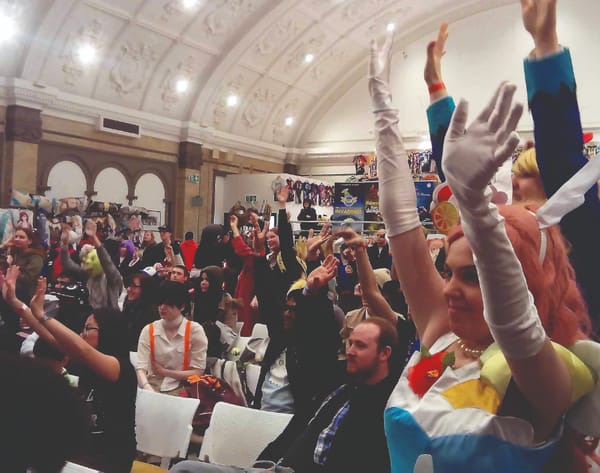Video games as an art form
An examination of what characteristics and features make video games creative and artistic.

Are video games an art form? It’s a bit of a controversial question and to some people, usually “old” people and art critics, it’s no question at all. One of the biggest voices against considering games as art was the film critic Roger Ebert who battled against the perception of video games becoming art all the way to his death. His argument was that no one in any field had been able to name a game worthy of comparison with great poets, authors, and filmmakers.
The dictionary definition of art is “the expression or application of human creative skill and imagination”. With this simple definition, it becomes easy to consider video games as art; however, not all games may meet this criteria. The additional subtleties behind the creation of games makes their classification as art a bit more complex. Artists work with the intention of creating art and expressing themselves. In contrast, video game designers, arguably, intend to craft. Designers put into consideration things like how to push the creation to as many people as possible and publicize it. While games must be creative and distinctive, their purpose is usually to make money. While this isn’t bad in of itself, it could conceivably take away from being an art form.
“Video games incorporate several pieces of art and creation together into something new”
Compared to most other “critically defined” pieces of art, video games are a medium of mediums. They have unique graphics with an array of 2D and 3D models as well as immersive stories and unique soundtracks and effects. If they are an art, they’re one that’s unique to digital space and are an amalgamation of art and science. Video games incorporate several pieces of art and creation together to make something new and unique that transcends the limits of any one type.
Video games are inherently interactive and, for some, art is usually a passive medium, in that it requires you to observe and reflect on what you experience. However, by the very act of interpretation, art arguable becomes interactive. Games are designed with a set of rules and are restricted to the limitations imposed by the designer. However, there is still a realm of freedom and possibility that a gamer is able to make their own. Through how you play, how you explore, and how you react, the gaming experience becomes a personal one. Super Mario Brothers can recreate the childlike wonder in exploring a colorful world, whereas That Dragon, Cancer can make you experience the hopelessness of losing a child. I personally cried my eyes out at the touching and melancholic story of To The Moon. And if you’ve found a personal connection with the work of another, then the purpose of art has been achieved.
As technology is no longer a significant limitation now as it was in the past, game developers have gone out of their way to add creative touches in order to add to the experience. These deliberate constraints can include limited controls, muted colour palettes or abstruse renderings; all of which serve to enhance the narrative and the emotion experienced. Some noteworthy examples are, Thomas was Alone where the minimalist aesthetic made you feel more of a connection to geometric shapes, and Limbo where the dark, silhouetted universe created a feeling of mystery and unease.
“Game developers have gone out of their way to add creative touches”
Due to the fact that video games require effort and attention to immerse yourself in, it makes it easy for non-gamers to dismiss the medium. Movies last around two hours and books may take a few days to read. By contrast, some video games need around forty hours of dedication to get the complete experience. Some people also prefer passive forms of entertainment, not wanting to bother with even a short game; their loss at the end of the day.
Video games can do so much. They reflect the world, challenge societal ideas, make us question ourselves and our morality or, in the case of Super Smash Brothers, bring people together (or maybe tear friendships apart with this particular example). While some people may disagree, video games are definitely a dominant art form for the 21st century, and will likely continue to be so for times ahead.









